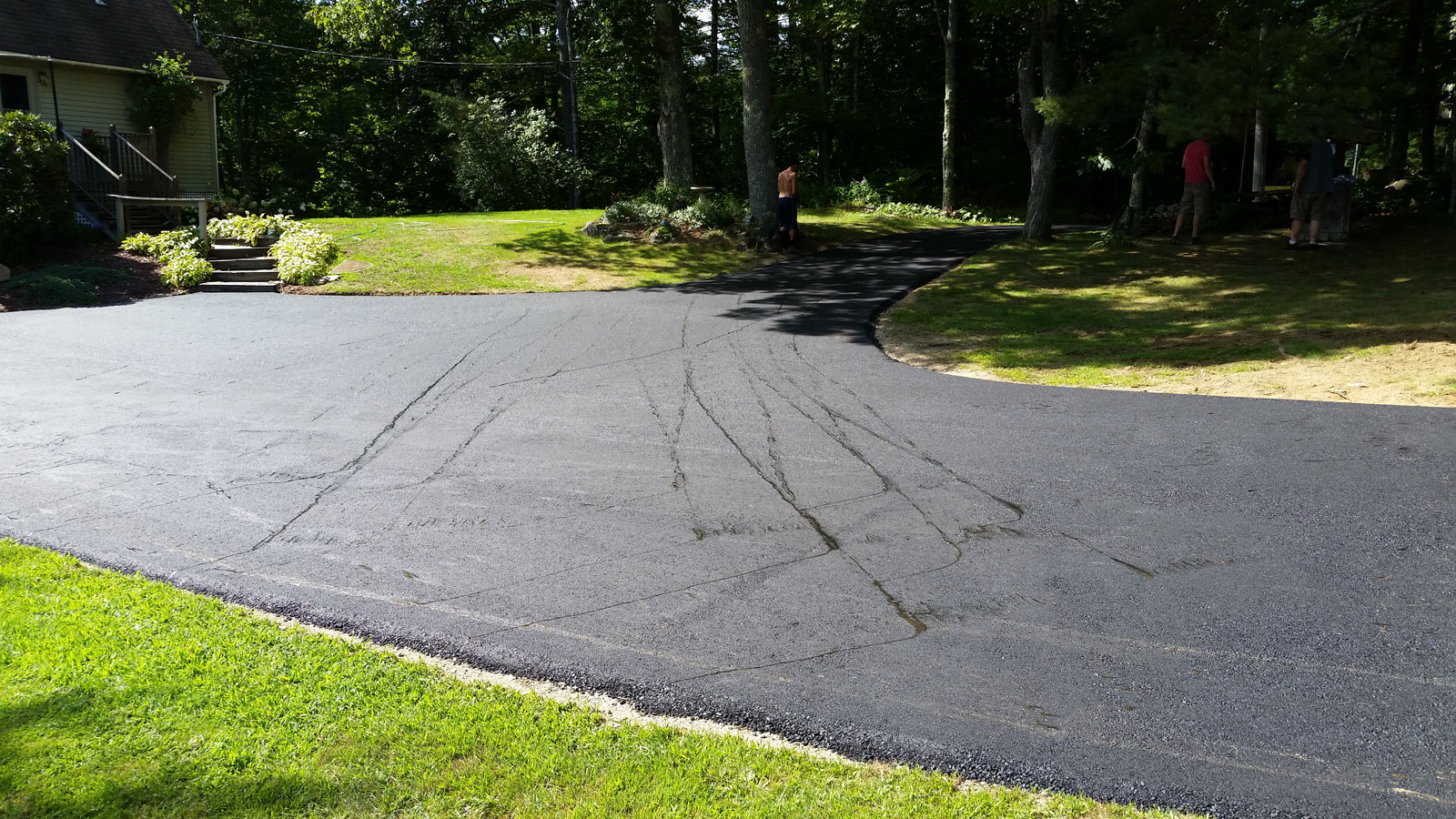Seal in High Quality: Professional Solutions for Asphalt Repair and Sealing
Seal in High Quality: Professional Solutions for Asphalt Repair and Sealing
Blog Article
Cold Mix Asphalt Vs. Hot Mix Asphalt: Which Is Right for You?

Composition Differences
Cold mix asphalt is created by emulsifying the asphalt binder with water and an emulsifying representative prior to blending it with accumulation. The warm mix asphalt manufacturing procedure entails warming the accumulation and asphalt binder separately before combining them at the asphalt plant.
Additionally, cold mix asphalt has a tendency to be less dense and more flexible than hot mix asphalt. This flexibility makes it better suited for locations with greater degrees of motion, such as driveways or roads with hefty web traffic. On the other hand, warm mix asphalt is understood for its high durability and resistance to rutting and cracking, making it a recommended selection for freeways and high-traffic roads where durability is important.
Installation Process Differences
The procedure of setting up cold mix and hot mix asphalt shows remarkable variances in their treatments and needs. Cold mix asphalt, being a more adaptable product, can be applied straight from the bag or container onto the gap or harmed area. It requires minimal preparation job, such as cleaning the location and condensing the cold mix with hand devices. This makes it a convenient alternative for temporary and fast repairs. In contrast, warm mix asphalt necessitates an extra sophisticated installation procedure. It involves warming the mix to high temperatures prior to laying it down on a correctly ready base. The preparation consists of compacting the base, using a tack layer, and utilizing hefty machinery like pavers and compactors for a long lasting and smooth finish. Because of the heating demands, warm mix asphalt setups are usually accomplished by professionals with specialized equipment, ensuring a more irreversible and structurally sound result.
Longevity and Longevity Elements
When taking into consideration asphalt alternatives, durability and longevity are crucial factors to assess for long lasting pavement performance,. Warm mix asphalt (HMA) is recognized for its exceptional durability and longevity. The high temperature levels during the laying and mixing procedure permit much better compaction, leading to a denser and stronger pavement structure. This leads to HMA being more immune to hefty traffic tons, extreme climate condition, and the results old compared to chilly mix asphalt (CMA)
In terms of longevity, HMA generally surpasses CMA as a result of its remarkable strength and resistance homes. HMA pavements have a longer solution life, requiring much less frequent fixings and maintenance, which can convert to cost financial savings over time. Additionally, HMA sidewalks are more conveniently customizable to fulfill particular task requirements, better enhancing their longevity.
Expense Factors To Consider
Taking into consideration the economic effects is a critical facet when look at this now evaluating the choice in between warm mix asphalt (HMA) and cool mix asphalt (CMA) for sidewalk jobs. While the preliminary expense of hot mix asphalt is generally higher than that of cold mix asphalt, HMA frequently provides a more cost-effective remedy in the lengthy run due to its premium longevity and long life.
In enhancement to material costs, it's essential to consider the expenditures linked with setup and maintenance when contrasting HMA and CMA. HMA usually needs specific equipment and skilled labor for correct setup, which can impact total job costs. Alternatively, CMA is much easier to work with and can often be used utilizing simpler strategies, potentially decreasing installment expenditures. Ultimately, the decision in between HMA and CMA ought to consider not just the initial price however likewise the long-lasting financial ramifications to establish one of the most economical choice for the certain pavement task.
Environmental Effect Contrast
Contrast of the ecological impacts between hot mix asphalt (HMA) and cold mix asphalt (CMA) discloses unique distinctions in sustainability practices. HMA production calls for high temperatures, resulting in increased energy intake and greenhouse gas discharges. The procedure additionally releases unstable organic substances (VOCs) and hazardous air contaminants (HAPs) right into the atmosphere. In helpful hints comparison, CMA is produced and used at reduced temperature levels, minimizing energy usage and exhausts substantially. The reduced production temperatures of CMA lead to reduced fuel consumption and lower levels of carbon dioxide discharges, making it a much more ecologically friendly alternative.
Moreover, the usage of CMA often entails recycling existing asphalt sidewalk, promoting source preservation and decreasing the amount of waste sent out to land fills. This reusing aspect additionally improves the sustainability of CMA compared to HMA. Generally, when thinking about the ecological impact, CMA arises as a more eco lasting choice due to its lower energy requirements, minimized emissions, and the potential for reusing existing products. By going with CMA over HMA, road building jobs can contribute positively to environmental preservation initiatives.
Final Thought
Finally, the option between cold mix asphalt (CMA) and hot mix asphalt (HMA) relies on numerous factors such as structure, installation procedure, longevity, longevity, expense, and ecological impact. angle parking. While CMA uses a cost-effective and fast service for small repairs, HMA guarantees premium resilience and long life for hefty website click reference traffic areas. Consider these variables very carefully to determine which kind of asphalt is the best choice for your paving requires

Taking into consideration the economic implications is a crucial facet when reviewing the selection in between warm mix asphalt (HMA) and cold mix asphalt (CMA) for sidewalk tasks. While the first price of warm mix asphalt is usually greater than that of chilly mix asphalt, HMA often offers a more affordable remedy in the long run due to its remarkable sturdiness and long life. asphalt repair.Comparison of the environmental impacts between warm mix asphalt (HMA) and cold mix asphalt (CMA) discloses unique distinctions in sustainability methods.In final thought, the choice in between cold mix asphalt (CMA) and hot mix asphalt (HMA) depends on numerous elements such as make-up, setup process, resilience, durability, cost, and environmental influence
Report this page